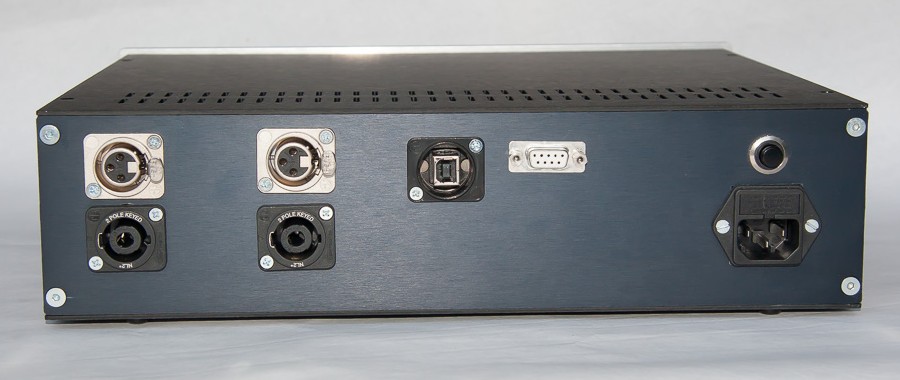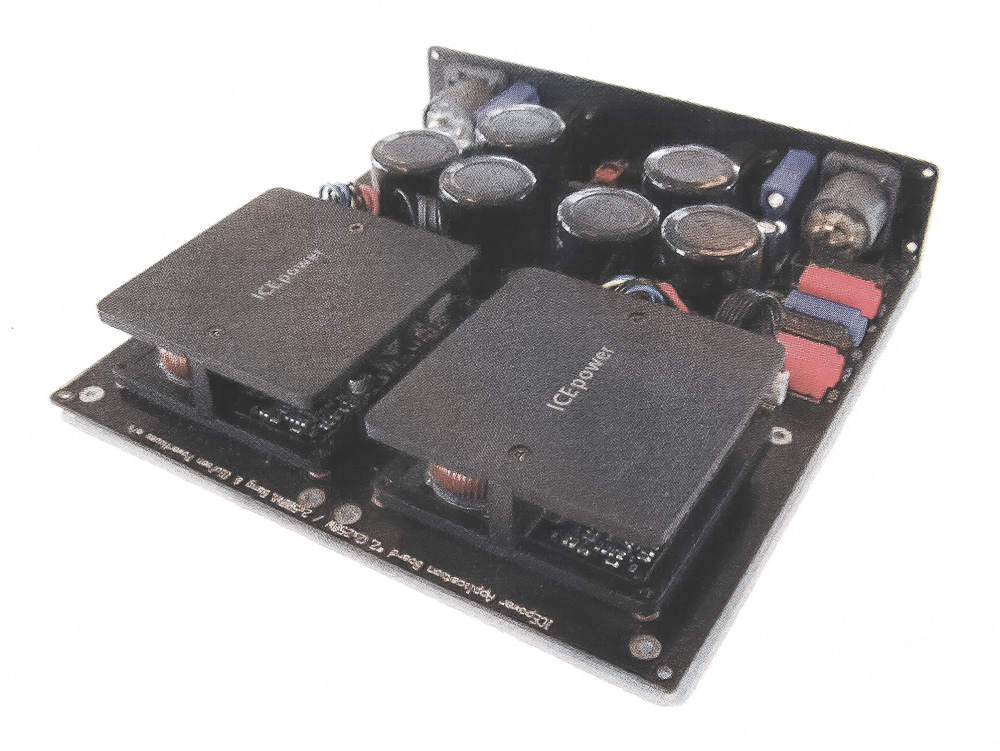Contents
Description
Block diagram
Detailed diagrams
Resources
Description
My electrostatic loudspeakers are based on active crossovers and individual amplifiers for the ESL-elements and the bass so I needed an extra power amplifier.
I had two ICEpower Class D amplifier modules (type 500A) which were just the right solution to drive my bass speakers. These modules are able to deliver 500 Watt of continuous power pr. channel with peaks exceeding 1.600 Watt, more than enough.
Originally, these modules were part of an evaluation kit with a motherboard with power supply and control circuitry and a trafo, so they just needed a nice cabinet.
The build in protection features on these modules could be better and with my limited experience with balanced power amplifiers, I soon blew up one of the amplifier modules as well as the motherboard so I decided that I needed better protection of the amplifier as well as speaker protection.
From the motherboad I have reused the 80V power supply components.
The motherboard also contained a regulated +/- 12 V supply and control circuits for power up, LEDs etc. I have build a new +/- 12 V supply and all control function are substituted with an Arduino solution.
The Arduino project
I decided to build an amplifier controller based on Arduino. The controller takes care of power up with soft start and numerous protection features that can shut down the amplifier within milliseconds.
When I started the Arduino project, I expected that it would be rather simple, taking a month or so but the project grew in size and features and I got more ambitious.
The controller measures critical voltages 1,000 times per second and it tests a number of parameters against predefined limits in order to detect internal and external faults and protect against fatal errors.
As I analyzed different faults and their symptoms, I found that a balanced amplifier has some unique characteristics and with the right calculations you can measure how well the amplifier is “balanced”. Some of the most critical errors like shorted output transistors will result in an “unbalanced” amplifier. This “unbalance” can be detected and responded upon.
I have written an article for AudioXpress about amplifier protection with Arduino, see Articles.
Finally, I decided to continue development to a level where it can be offered as a product to the audio industry. This includes facilities that makes it easy for customers to configure the product according to individual needs as well as comprehensive guidelines and documentation, see Products.
The amplifier project is covered on the following pages.


